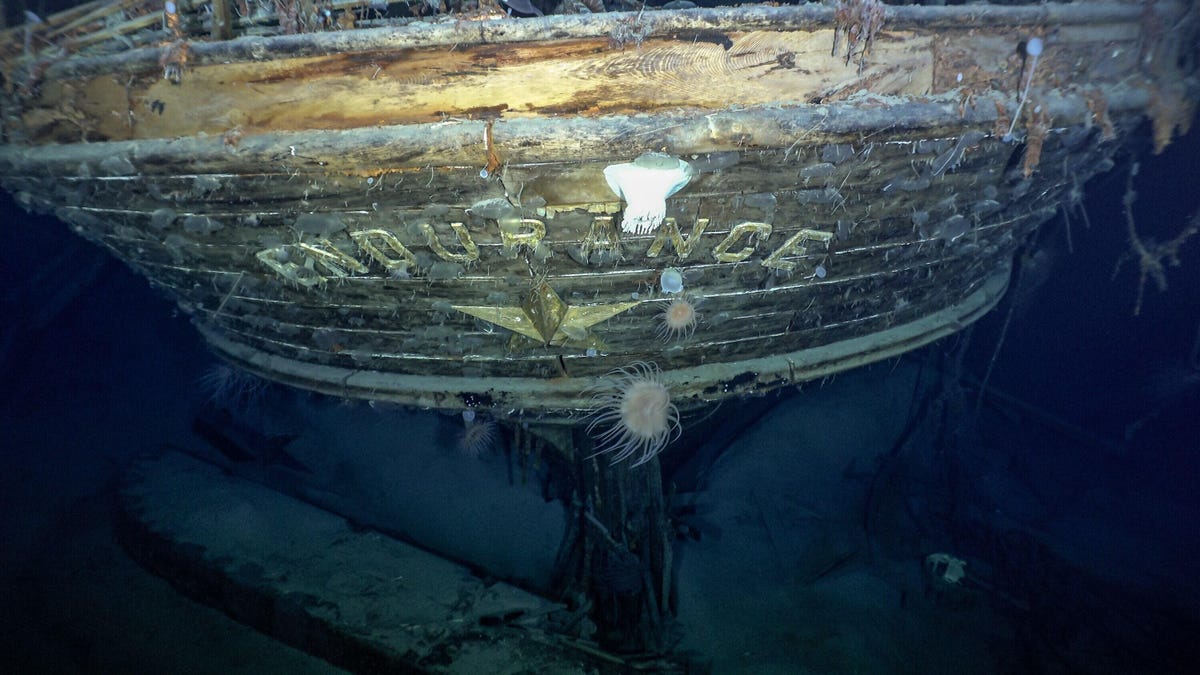Academy Award-winning filmmaker Chai Vasarhelyi knows how to tell a good story.
The films she helped bring to life about American climber Alex Honnold conquering El Capitan without safety gear (Free Solo) and the struggles faced by elite swimmer Diana Nyad to swim over 100 miles nonstop from Cuba to Florida (Nyad) are award-winning explorations of the human spirit.
Each celebrates people who face seemingly impossible challenges and defy seemingly impossible odds to succeed. Which is why she and her husband, award-winning filmmaker Jimmy Chin, were drawn to the story of Sir Ernest Shackleton and his awe-inspiring 1914-1917 expedition to Antarctica with the crew of the Endurance. The ask was to tell Shackleton’s story as well as the story of a contemporary crew, funded by the Falklands Maritime Heritage Trust, that set out in an icebreaker in early 2022 to locate the final resting place of Shackleton’s ship, below the ice. Vasarhelyi says she and Chin knew they needed to think creatively about how to tell the stories of both grand adventures.
Endurance Director Jimmy Chin on the re-creation set in Los Angeles.
“I have long been fascinated by the Shackleton story, it is one of the great survival stories,” Vasarhelyi said in an interview. But “there have been so many great films, how would we make it in 2024?”
Their answer: use cutting-edge generative AI tools to give voice to the personal diaries, letters and other writings of Shackleton and members of the 27-man crew he kept alive for over 750 days after the Endurance was trapped and then sank in the frigid, ice-packed Weddell Sea thousands of miles from civilization. His greatest failure turned into a success, and a lesson in leadership, as he worked to ensure his entire crew survived the brutal conditions (minus the expedition dogs and a cat named Mrs. Chippy).
“The way into the Shackleton story is through the diaries,” Vasarhelyi said. “These are primary accounts from multiple points of view of the same events, that are revealing of great character.”
In the new National Geographic documentary film Endurance, which airs on Disney Plus starting Nov. 2, Vasarhelyi, Chin and filmmaker Natalie Hewit used AI to have Shackleton and six members of his crew “read” aloud their writings decades after their deaths. The filmmakers decided to use AI voice-overs only of crew members for whom they had archived audio interviews from long-ago recordings — something they said had never been done with audio that old. Created with AI software from Ukrainian software developer Respeecher, the voice-overs were set against re-creations of the journey, as well as the original film footage and photographs rescued from the ship by the Endurance’s official photographer, Frank Hurley.
The Endurance after it was crushed by the ice, shown with the expedition’s dogs.
Their goal was to make viewers feel as though they’re actually on site with Shackleton and his crew as they abandon the ship, set up camp on the ice, trek across the frozen surface and then survive an arduous journey across storm-ravaged seas.
After watching it, I can attest to their success in taking you along on the journey.
The re-creations were staged in California and Iceland, on glaciers and re-created boats in actual ice and freezing temperatures. And they included having Burberry, which made the suits Shackleton’s men wore, sew new outfits from the original pattern and material for the re-creations, Vasarhelyi said. The filmmakers were also able to add some color to Hurley’s original images and match the color of the original suits — after getting permission from archivists at the British Film Institute, who preserved Hurley’s film and don’t generally allow filmmakers to manipulate historical records, she said.
Like many other filmmakers, Vasarhelyi is concerned about how AI might be misused in the creative process, but she also knows firsthand that there are ways it can be used responsibly to advance storytelling.
“I very much believe that we need to regulate and educate ourselves on these tools, and that our guilds are doing the right thing by trying to protect our creative rights,” Vasarhelyi said, referring to contracts negotiated during the past year between creatives and Hollywood studios over AI use.
“This is a good example of how one of those AI tools could be used [in a way] that augments my ability to make a documentary,” she said.
“This film … when I watched it in its final form, with the sound design and the color treatment of the archival footage and the voices, I was like: ‘That’s crazy. We’re watching real footage that was taken 110 years ago in the most remote place on Earth.'”
